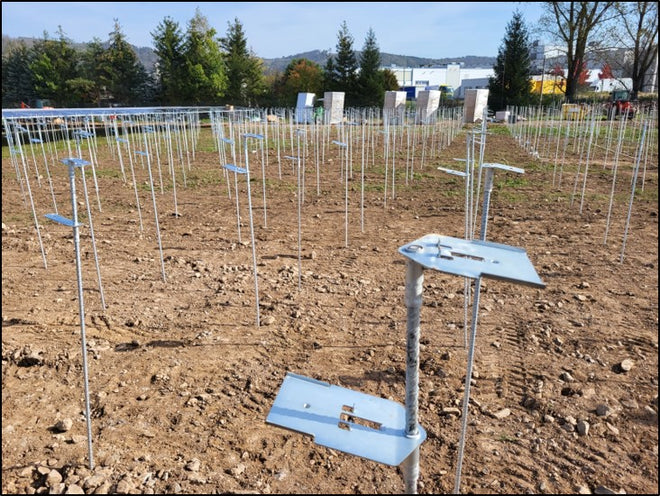Agri Photovoltaics
What is Agri Photovoltaics?
Agri-PV is an abbreviation for "agricultural photovoltaics" or "agri-PV" and refers to the combination of photovoltaics (PV) with agricultural use on the same site. In agri-PV systems, solar panels are installed on agricultural land while the land continues to be used for agricultural activities, such as growing crops or raising livestock. This type of use allows for efficient use of the available land and offers both economic and environmental benefits.

Facts about the classic Agri PV system
By combining photovoltaics and agricultural use on the same site, the area is used efficiently, which can lead to higher overall productivity.
Landowners can earn additional income by selling the electricity they generate or through leasing agreements with energy companies, and continue to use their land to produce certain agricultural products.
The PV modules provide protection from weather conditions such as hail or heavy rain, which helps protect agricultural yields. In times of prolonged dry periods, the PV system particularly protects against rapid drying out of the soil. The shading effect of the PV modules can help to preserve soil moisture and promote plant growth, leading to more efficient use of water and other resources.
Using solar energy to generate electricity reduces dependence on fossil fuels and helps reduce greenhouse gas emissions, making it more environmentally friendly overall.

BECU© substructure for your Agri PV
The BECU© PV substructure was developed by BEC-Energie Consult GmbH with the aim of massively reducing the need for steel and concrete for substructures and at the same time installing more power on the available area. This goal was achieved.
The BECU© PV substructure is therefore not only significantly more cost-effective and economical, but also more environmentally friendly because less energy-intensive steel and concrete are used and soil sealing is reduced to a minimum. The possibility of using it as an agri-PV increases its potential even further.
The principle is as ingenious as it is simple. Galvanized reinforcement bars with a diameter of between 14 and 18 mm are driven into the ground. The module holders are attached to the reinforcement bars, on which the modules are then mounted. This creates a self-supporting PV construction.
BECU© substructure for your Agri PV
Minimal soil sealing: The use of the BECU© substructure minimizes soil sealing to just 1.5 to 3% of the total area. These outstanding values leave the greatest possible space for nature beneath the facility.
Wide viewing areas for animals and nature: The open structure of the facility offers animals such as sheep and poultry plenty of space and promotes the growth of shade-tolerant plants underneath.
Even rainwater distribution: The arrangement of the modules ensures efficient rainwater distribution and protects the soil from drying out quickly.

Facts about BECU substructure
The BECU© substructure enables cost savings of between 30 and 50% in investment compared to conventional PV substructure systems. At the same time, between 20 and 40% more power can be installed.
Construction is up to 30% faster and does not require heavy machinery that can potentially damage the land, saving time and labor costs.
You can achieve up to 40% more power in the same area, increasing your overall yields.
The BECU© substructure simplifies the dismantling of the system and minimizes the material and energy consumption, which is ecologically and economically advantageous.
The reduced need for steel and concrete minimizes environmental impact, which improves the plant's energy balance. The lower material consumption reduces transport costs and saves CO2.






